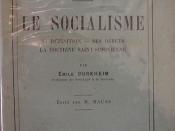Why People Commit Crime: A Strain Theory Perspective
Deviance, criminal behavior and wrong doings; why do they occur? People don't just wake up one morning and say "I'm off from work today so why don't I just go rob a bank". There has to be something in their past or present experiences that cause one to engage in criminal behavior. So what makes people commit crime and most importantly why do they fell they need to so? Criminologists have studied this question for many years and came up with so many different types of answers and theories. All these theories prevail their own unique reason for crime. Due to my interest in this question I also have been reading some theories and looking for a reason. However I stopped at one theory that I automatically had my attention. As I read more about if all the pieces of the complex puzzle of crime began to fall in place.
This theory is called the strain theory. This paper will takes you through the day that it was written by Robert Merton in 1938 and the day it was transformed by Robert Agnew into the General Strain Theory in 1992.
A French Sociologist by the name of Emile Durkheim popularized the concept of anomie in his book Suicide: Astudy in Sociology; 1897 where he studied thousands of cases of suicides and concluded that people commit the self-inflicted act due to influences pressured onto them by society. He defined anomie to mean "normlessness". Years later, in 1938 Robert Merton applied Durkheim's definition of anomie to modern industrial societies.
Robert Merton was born on July 4, 1910, in Philadelphia, Pennsylvania. He was named Meyer Schkolnick, but later changed to Robert King Merton because he didn't was every one to know that he was Jewish.


